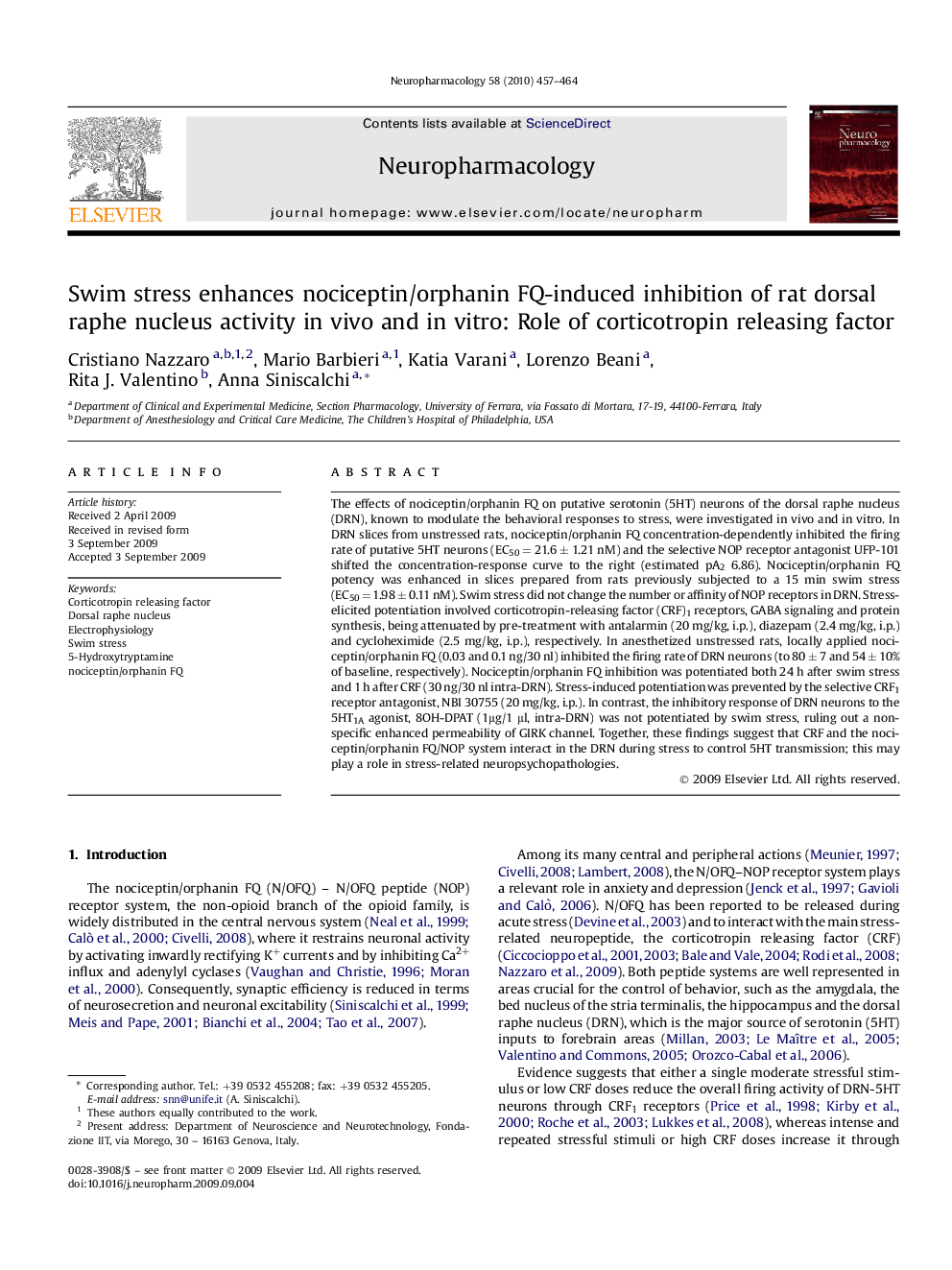| Article ID | Journal | Published Year | Pages | File Type |
|---|---|---|---|---|
| 2494329 | Neuropharmacology | 2010 | 8 Pages |
The effects of nociceptin/orphanin FQ on putative serotonin (5HT) neurons of the dorsal raphe nucleus (DRN), known to modulate the behavioral responses to stress, were investigated in vivo and in vitro. In DRN slices from unstressed rats, nociceptin/orphanin FQ concentration-dependently inhibited the firing rate of putative 5HT neurons (EC50 = 21.6 ± 1.21 nM) and the selective NOP receptor antagonist UFP-101 shifted the concentration-response curve to the right (estimated pA2 6.86). Nociceptin/orphanin FQ potency was enhanced in slices prepared from rats previously subjected to a 15 min swim stress (EC50 = 1.98 ± 0.11 nM). Swim stress did not change the number or affinity of NOP receptors in DRN. Stress-elicited potentiation involved corticotropin-releasing factor (CRF)1 receptors, GABA signaling and protein synthesis, being attenuated by pre-treatment with antalarmin (20 mg/kg, i.p.), diazepam (2.4 mg/kg, i.p.) and cycloheximide (2.5 mg/kg, i.p.), respectively. In anesthetized unstressed rats, locally applied nociceptin/orphanin FQ (0.03 and 0.1 ng/30 nl) inhibited the firing rate of DRN neurons (to 80 ± 7 and 54 ± 10% of baseline, respectively). Nociceptin/orphanin FQ inhibition was potentiated both 24 h after swim stress and 1 h after CRF (30 ng/30 nl intra-DRN). Stress-induced potentiation was prevented by the selective CRF1 receptor antagonist, NBI 30755 (20 mg/kg, i.p.). In contrast, the inhibitory response of DRN neurons to the 5HT1A agonist, 8OH-DPAT (1μg/1 μl, intra-DRN) was not potentiated by swim stress, ruling out a non-specific enhanced permeability of GIRK channel. Together, these findings suggest that CRF and the nociceptin/orphanin FQ/NOP system interact in the DRN during stress to control 5HT transmission; this may play a role in stress-related neuropsychopathologies.
